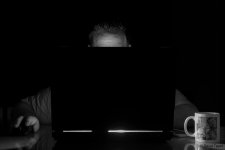March 13 - April 13 Monthly Assignment: Self Portrait w/o Showing Your Face
But before I explain this months assignment I need to get this formal stuff out of the way
.---------------------------------------------------------------------------------------------------------------------------
Assignments are designed to help you grow your photography skills and creativity, and have fun doing so. Assignments are to make all of us photographers think outside the box also.The Rules
.-----------------------------------------------------------------------
Okay, with the rules out of the way, this month's challenge is to create a self portrait but one which does not include your head or face. Successful portraits are typically judged by how well the viewer can peer into the subject's eyes, the eyes are indeed the "windows to the soul". Studies have shown that when we meet someone or when we look at a portrait, we invariably look directly in the eyes first. That's why such emphasis is placed in portrait photography on getting the eyes in sharp focus catchlights. But you will not have this luxury, instead you will have to convey your "soul" without resorting to your eyes or facial expressions.
Rather than posting examples of portraits without heads from our portfolios, we would like to use this occasion to introduce to the group to other photographers who's work falls directly into this category of portraiture.
Lee Friedlander
Lee Friedlander (American) was born in 1934 in NY. Friedlander started his photography in the late 1950's and is best known for his work with shadows and reflections from the 1960-1970's. Working in 35mm black and white media, Friedlander was fascinated with his own shadow casts and his image reflecting off of glass. In this way Friedlander insinuates himself into the work but carries nothing identifiable as "self" into view. His presence is both ephemeral and real as he becomes the central aspect of the photograph while still remaining just outside the frame or as a ghost-like reflection.
Viewing Friedlander's work today one gains a real sense of the underlining turbulence that marks this time in western culture and the changes taking place in the 1960's. It may be hard for us in the 2010's to fully appreciate the social changes taking place during this period in time. From civil rights to individual freedom of expression, the 1960's was a unique time in history when social norms were all open to examination. It is these changes and the uniqueness of Friedlander's point of view that make his work, both complex and simplistic, so compelling to modern day viewers. Friedlander's photography ushered in the genre of social landscape photography or as what we would now refer to as "street photography". The most fascinating aspect of Friedlander's work is how one can look at the same images multiple times and still glean new aspects that you missed in earlier views.
Below are some classic examples of Friedlander's self portraits. His body of work is very deep and I urge you to further explore his body of work.
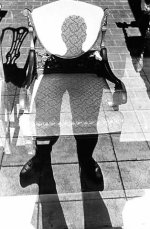
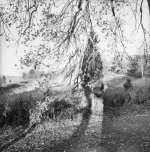
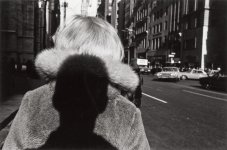
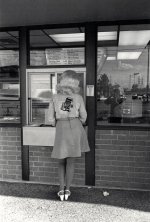
John Coplans
John Coplans (British) was born in 1920 London and died in 2003. Like many men of his time, he joined the armed forces in WWII. After the war, Coplans enrolled in art school and started his career as a fine arts painter in California and co-founded Artforum magazine but is best known for his photographic work. Coplans had a fascination with how age and time affects the human body. Coplans documented in fine detail the changes he experienced as he aged in an attempt to capture aesthetics of traveling through time. From sagging skin to age spots to body hair, he opened the door to self exploration by documenting the decline of the human body using his own flesh to represent "Everyman's" journey through time.


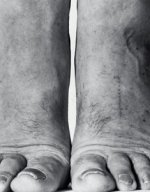
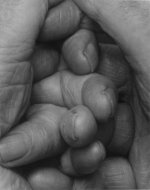
These are just two in a long list of photographers who's work fits well within this challenge. Please feel free to add additional examples of photographers work that explores portraits that do not need a head shot to convey their meaning.
As you consider how you will prepare your faceless or headless portraits, think about how you view yourself vs. how others may view you. Look around you where you sit, on your shelves, in your car and hanging on your walls - all of this is you. You are the sum total of your experiences and you surround yourself with vestiges of your life and it is these things that indirectly reflect who you are.You may submit up to 3 entries. You can include some or none of your body to represent yourself, the only thing you cannot include is your head. This is an opportunity to push your creativity well beyond snaps of grandchildren and flowers and into the realm of photographic art.
But before I explain this months assignment I need to get this formal stuff out of the way
.---------------------------------------------------------------------------------------------------------------------------
Assignments are designed to help you grow your photography skills and creativity, and have fun doing so. Assignments are to make all of us photographers think outside the box also.The Rules
- Any photo submitted for a monthly assignment must be taken during the month specified in the assignment thread and taken by you! Because not all EXIFdata can be verified, we will use the honor system.
- Photos must be posted to the thread in order to be considered for the challenge. Links to photos will not be considered an entry.
- Only three photo entries per member, for each assignment, unless otherwise indicated.
- Assignments will be judged solely by the panel. Individual voting via post "likes" will be incorporated into the final selection of the winning photo.
- Judging criteria is based on the Twelve Elements of a Merit Image.
- The panel will select 5 shots to be displayed in the Monthly Challenge forum and homepage of the site.
.-----------------------------------------------------------------------
Okay, with the rules out of the way, this month's challenge is to create a self portrait but one which does not include your head or face. Successful portraits are typically judged by how well the viewer can peer into the subject's eyes, the eyes are indeed the "windows to the soul". Studies have shown that when we meet someone or when we look at a portrait, we invariably look directly in the eyes first. That's why such emphasis is placed in portrait photography on getting the eyes in sharp focus catchlights. But you will not have this luxury, instead you will have to convey your "soul" without resorting to your eyes or facial expressions.
Rather than posting examples of portraits without heads from our portfolios, we would like to use this occasion to introduce to the group to other photographers who's work falls directly into this category of portraiture.
Lee Friedlander
Lee Friedlander (American) was born in 1934 in NY. Friedlander started his photography in the late 1950's and is best known for his work with shadows and reflections from the 1960-1970's. Working in 35mm black and white media, Friedlander was fascinated with his own shadow casts and his image reflecting off of glass. In this way Friedlander insinuates himself into the work but carries nothing identifiable as "self" into view. His presence is both ephemeral and real as he becomes the central aspect of the photograph while still remaining just outside the frame or as a ghost-like reflection.
Viewing Friedlander's work today one gains a real sense of the underlining turbulence that marks this time in western culture and the changes taking place in the 1960's. It may be hard for us in the 2010's to fully appreciate the social changes taking place during this period in time. From civil rights to individual freedom of expression, the 1960's was a unique time in history when social norms were all open to examination. It is these changes and the uniqueness of Friedlander's point of view that make his work, both complex and simplistic, so compelling to modern day viewers. Friedlander's photography ushered in the genre of social landscape photography or as what we would now refer to as "street photography". The most fascinating aspect of Friedlander's work is how one can look at the same images multiple times and still glean new aspects that you missed in earlier views.
Below are some classic examples of Friedlander's self portraits. His body of work is very deep and I urge you to further explore his body of work.




John Coplans
John Coplans (British) was born in 1920 London and died in 2003. Like many men of his time, he joined the armed forces in WWII. After the war, Coplans enrolled in art school and started his career as a fine arts painter in California and co-founded Artforum magazine but is best known for his photographic work. Coplans had a fascination with how age and time affects the human body. Coplans documented in fine detail the changes he experienced as he aged in an attempt to capture aesthetics of traveling through time. From sagging skin to age spots to body hair, he opened the door to self exploration by documenting the decline of the human body using his own flesh to represent "Everyman's" journey through time.




These are just two in a long list of photographers who's work fits well within this challenge. Please feel free to add additional examples of photographers work that explores portraits that do not need a head shot to convey their meaning.
As you consider how you will prepare your faceless or headless portraits, think about how you view yourself vs. how others may view you. Look around you where you sit, on your shelves, in your car and hanging on your walls - all of this is you. You are the sum total of your experiences and you surround yourself with vestiges of your life and it is these things that indirectly reflect who you are.You may submit up to 3 entries. You can include some or none of your body to represent yourself, the only thing you cannot include is your head. This is an opportunity to push your creativity well beyond snaps of grandchildren and flowers and into the realm of photographic art.
Last edited:



